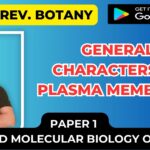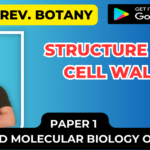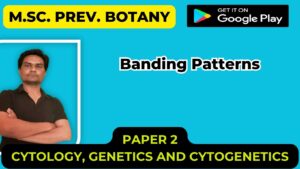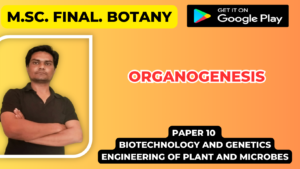![]()
Properties of Plasma membrane
All materials going into and outside the cell have to pass through plasma membrane in This transport depends on the size of molecules, electric charge on diffusing particles. their solubility in lipid and the concentration of materials inside and outside the cell.
Plasma membrane has the following important properties-
(i) Permeability :
- Plasma membrane is selectively permeable therefore.
- It regulates the flow of material going in and outside of the cell.
- It also maintains differences in the concentration of soluble substances in cytoplasm.
- Some material like 02. C02 and water can freely move through plasma membrane whereas other substances such as sodium ion, protein and polysaccharides can not move freely.
- Actually, the movement of substances into the cell and outside is regulated by pores present on plasma membrane.
- The permeability of membrane changes with the change in concentration of Na ion.

(ii) Osmosis:
- A process in which water or solvent moves from its high concentration to low concentration.
- The concentration of cytoplasm is comparatively concentrated than outer medium. Thus it does not allow to diffuse the materials present inside the cell. Hence, water enters the cell through osmosis.
- The movement of water inside cells is called endo-osmosis and outside cells are called exo-osmosis.


(iii) Passive transport or diffusion :
- When molecules of different substances diffuse through membrane without using any energy it is called passive transport.
- Plasma membrane contains many small pores of size 7-10A which are positively or negatively charged.
- These pores act as valves. ions and molecules collide with each other inside and outside of cells using their kinetic energy.
- When this collision occurs on pores on membrane then they move outside the membrane through these pores.
- With the rising temperature uncontrolled speed occurs which moves molecules from higher concentration to lower concentration. This is called diffusion. No energy is used in this type of transport hence it is called passive transport.


(iv) Facilitated diffusion :
- In this process no energy is utilized and also in these molecules are transported from high concentration to low concentration.
- In this larger molecule are transport with the help of specific carriers or helpers protein. Ex- permease .
- In this protein are loosely bound to the molecule and follow the selective path for transport the molecule.
- Such type of facilitated diffusion is highly selective and is completed through special channels without use of energy.

(v) Active transport :
- In active transport, molecules or ions move from low concentration area to higher concentration or in the opposite direction to concentration gradient.
- In this type of transport energy of cell is utilized.
- This energy helps to control diffusion forces. Active transport Is of two types-primary and secondary.

1) Primary Active transport :
- Transport that directly uses ATP for energy is primary active transport.
- This is directly related with ATP (chemical energy) or electron flow (electric energy) for example ATPase in mammals and proton translocating ATPase of bacteria.
- ex.- Sodium and Potassium pumps.
- Na is pumped out of the cell by the sodium pump and K is pumped inside the cell, these two pumps work simultaneously and in absence of either Na or k movement of Na and K stops.
- In this ATPase enzyme works as a monovalent ion pump. this is believed to be an Integral plasma protein Essential part of ion transport ATPase process is cyclic phosphor cation- dephosphorylation initiated by Na and K respectively
The process is as follows

(a) Na and ATP bind to special sites of ATPase complex. This Is an intermediate compound made up of a-subunit and p-subunit. The a-subunt Is responsible for ATP hydrolysis and ion pumping while the -p – subunit Is essential for the correct assembly of the ATPase in Endoplasmic reticulum.
(b) Bound Na is needed for phosphorylation of the bigger subunit of ATPase
(c) Phosphorylation of ATPase brings conformational changes resulting in reorientation of enzyme within the membrane thereby Na+ can pass through the membrane
d) In the same manner protein dephosphorylation is brought about by bound K thus results in ongnal conformation and hence transport of k can take place.
(2) Secondary Active Transport :
- In this the energy is derived secondarily from energy that is already stored in the form of ionic concentration.
- In this one of many molecules move across the plasma membrane showing uphill movement of molecules

(A) with thc downhill movement of others
(B)SGLT2 Pump
- It is a glucose transporter that helps movement of glucose molecules in our body against its gradient by bringing a sodium molecule.
- Sodium wants to get inside the cell and the energy released by travelling down its gradient is enough to power glucose into the cell
- As both molecules are moving In the same direction is called a symporter.
- Proteins which allow molecules to go in opposite directions it are called as antiporters
- Many active transporters use sodium to move other molecules agans in their gradients.
(vi) Endocytosis and Exocytosis :
- Major activity of plasma membrane of few cells is endocytosis
- This is a process in which material is transported into cells by forming vesicles.
- The process of engulfing large particles or molecules directly by plasma membrane is called phagocytosis.
- The word phagocytosis is derived from (greek word phagein means to eat ).
- Ex- protozoa and metazoa Amoeba also digest food material using this process In this process cell forms vesicle by pseudopodia around large particles This is formed by Invagnation and called phagosomes Phagosomes unite with lysosomes in cell where It Is digested The remains of material are again ejected out of the plasma membrane by the process known as egestion.

(vii) Biogenesis of Cell organelles –
- Biogenesis of Many organelles like E.R. Nuclear membrane mitochondria, Golgi complex etc are followed by plasma membrane.
(viii) Oxidative phosphorylation
- Mitochondrial and Prokaryotic cells inner membrane have the electron transport system for oxidative phosphorylation. It contains many types of enzymes for oxidation
(ix) Mechanical support
- The plasma membrane retains a fixed shape of cell and it also protects the cell organelle.
- By this all cell organelles are separated and perform their work separately.













